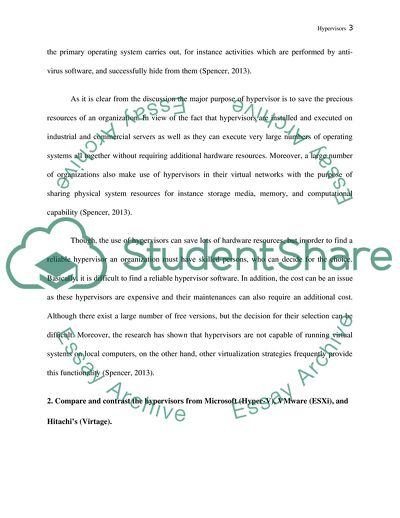Cite this document
(The Technical Advantages and Disadvantages of Using a Hypervisor in an Enterprise Assignment Example | Topics and Well Written Essays - 2500 words, n.d.)
The Technical Advantages and Disadvantages of Using a Hypervisor in an Enterprise Assignment Example | Topics and Well Written Essays - 2500 words. https://studentshare.org/information-technology/1806401-term-paper-hypervisors
The Technical Advantages and Disadvantages of Using a Hypervisor in an Enterprise Assignment Example | Topics and Well Written Essays - 2500 words. https://studentshare.org/information-technology/1806401-term-paper-hypervisors
(The Technical Advantages and Disadvantages of Using a Hypervisor in an Enterprise Assignment Example | Topics and Well Written Essays - 2500 Words)
The Technical Advantages and Disadvantages of Using a Hypervisor in an Enterprise Assignment Example | Topics and Well Written Essays - 2500 Words. https://studentshare.org/information-technology/1806401-term-paper-hypervisors.
The Technical Advantages and Disadvantages of Using a Hypervisor in an Enterprise Assignment Example | Topics and Well Written Essays - 2500 Words. https://studentshare.org/information-technology/1806401-term-paper-hypervisors.
“The Technical Advantages and Disadvantages of Using a Hypervisor in an Enterprise Assignment Example | Topics and Well Written Essays - 2500 Words”. https://studentshare.org/information-technology/1806401-term-paper-hypervisors.


